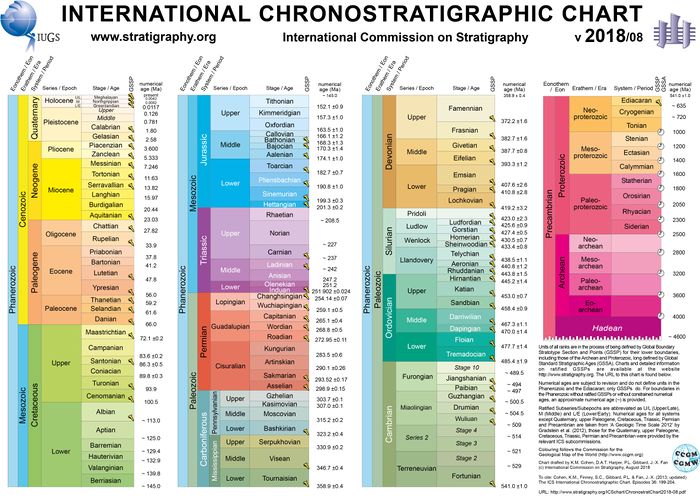Anthropocene
The Anthropocene is an unofficial, alternative name for the current Holocene epoch. Before "Holocene" was ratified as the current epoch's name[1], "Anthropocene" was sometimes used. Some people believe that the current, primary driving force of permanent changes in the Earth systems is humans, which is reflected by the suffix "anthro" (meaning human). "Anthropocene" is now mostly used to denote a time of human influence in Earth's history as opposed to an official, defined epoch of geologic time.[2]
Holocene versus Anthropocene and Anthropogene
The Holocene (top left of Figure 1) has also been referred to as the Anthropogene, which means "Age of Man". From a biological viewpoint, "Anthropogene" is a bit of a misnomer. Homo sapiens (or modern humans) became a distinct, established species during the Pleistocene (below the Holocene in Figure 1), the earlier Quaternary epoch. "Age of Man" is used in more of social context, marking the period of time when humans began to have a distinct impact on the environment and begin to establish civilizations.[3] "Anthropocene" has also been used instead of "Holocene" in some instances but, while having the same overall problems and implications as "Anthropogene", it is a little more accurate. The suffix "-cene" is used for geological epochs, which is what the Holocene is and "-gene" is used for geological periods (epochs are subdivisions of periods).[2]

For Further Reading
References
- ↑ 1.0 1.1 International Commission on Stratigraphy."International Chronostratigraphic Chart v2018" Accessed Nov.8, 2018 [Online]. Available: http://www.stratigraphy.org/index.php/ics-chart-timescale
- ↑ 2.0 2.1 Rull, Valentí. "The “Anthropocene”: neglects, misconceptions, and possible futures: The term “Anthropocene” is often erroneously used, as it is not formally defined yet." EMBO reports (2017): e201744231. Available from: https://onlinelibrary.wiley.com/doi/full/10.15252/embr.201744231
- ↑ Mayewski, Paul A., Eelco E. Rohling, J. Curt Stager, Wibjörn Karlén, Kirk A. Maasch, L. David Meeker, Eric A. Meyerson et al. "Holocene climate variability." Quaternary research 62, no. 3 (2004): 243-255.

